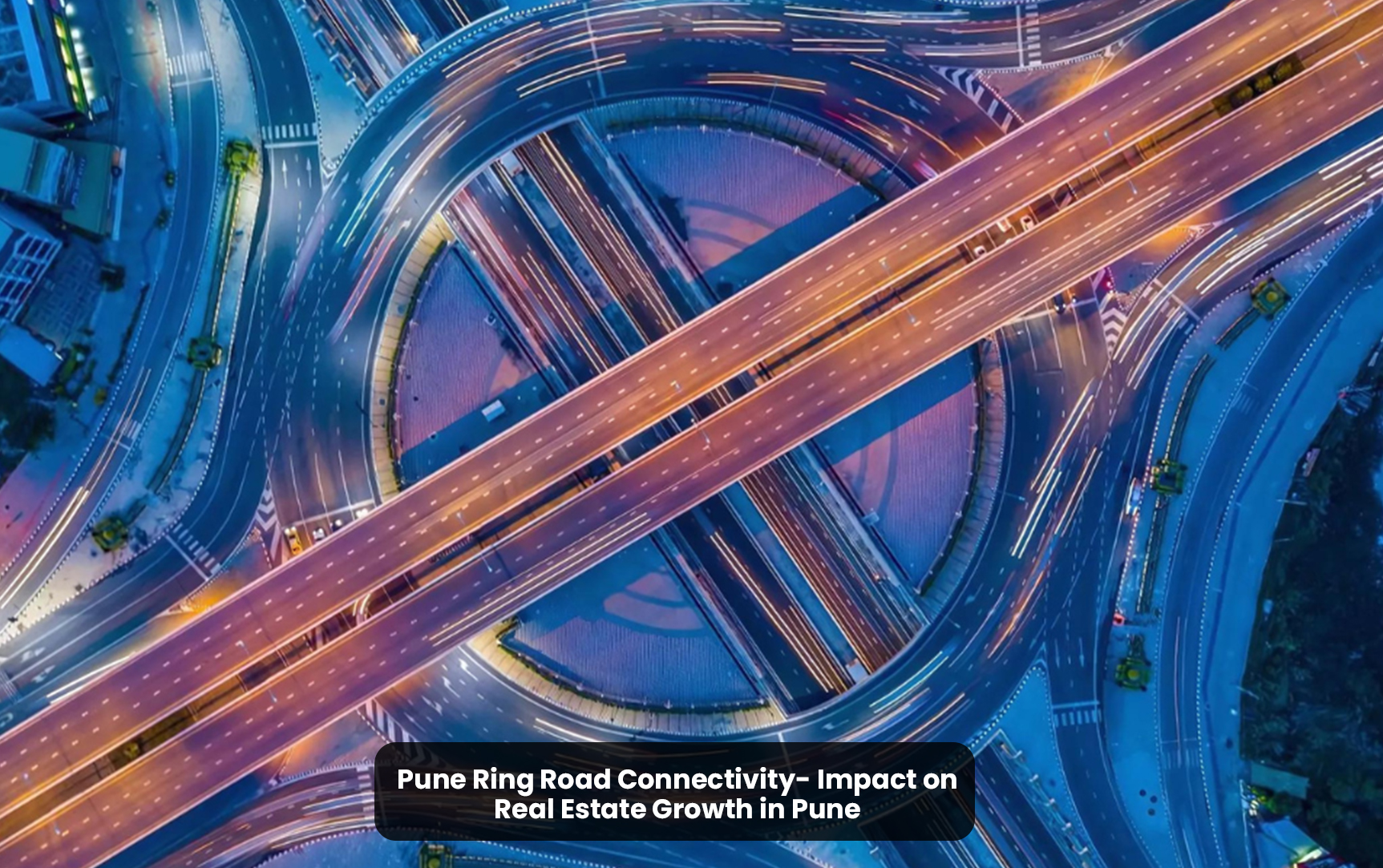
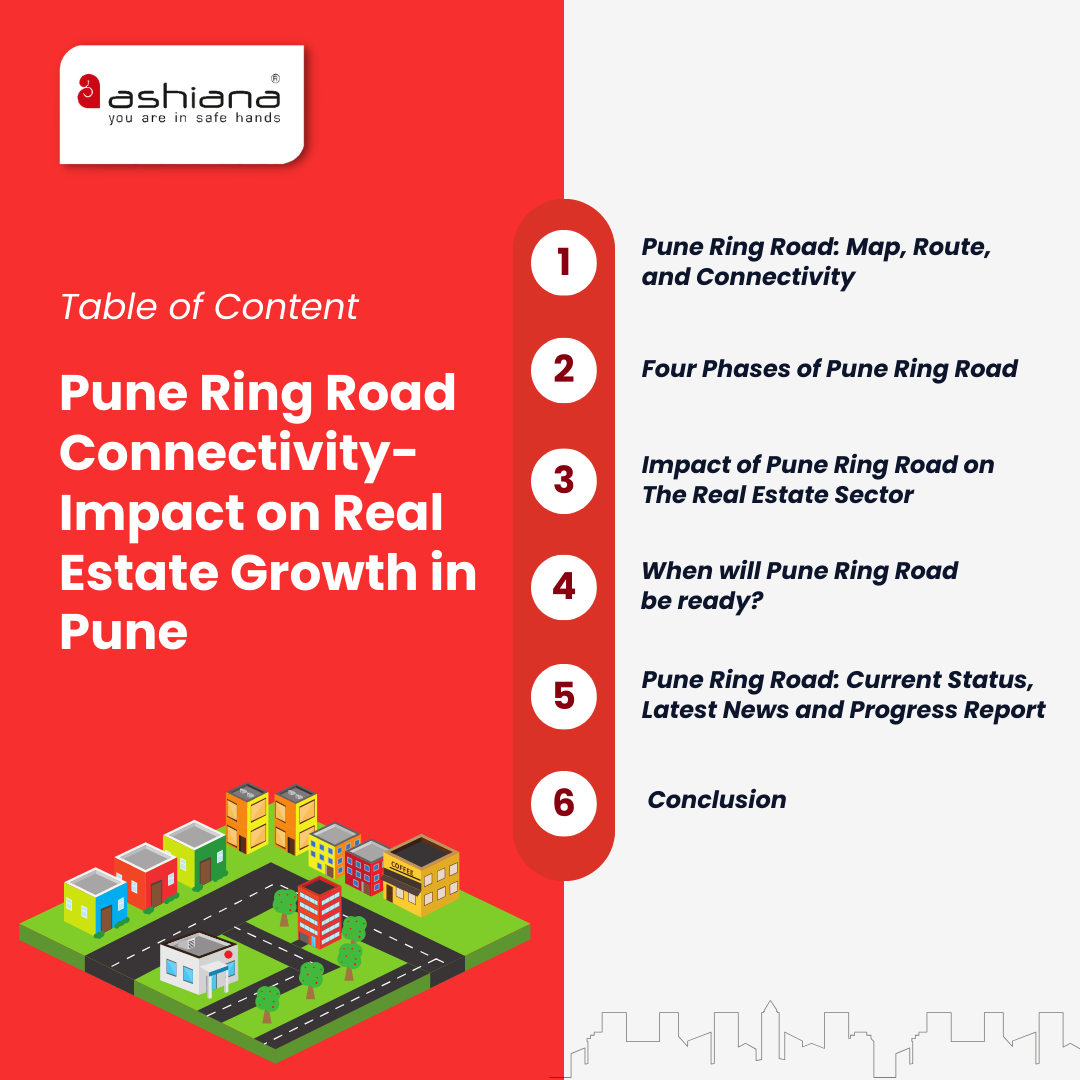
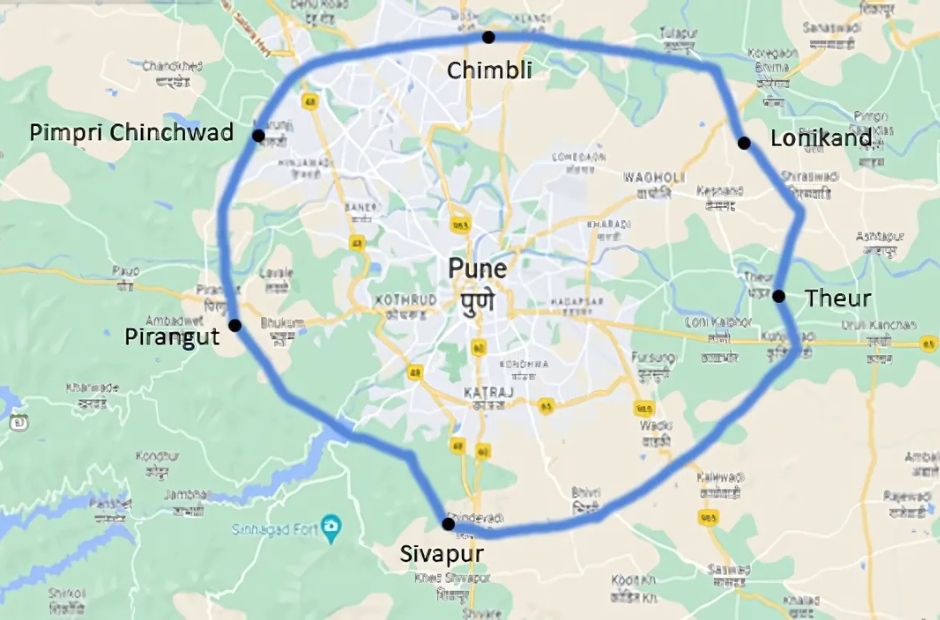 Image Source: Homebazaar
For more details, you can visit the official PMRDA website to view the Pune Ring Road map.
Image Source: Homebazaar
For more details, you can visit the official PMRDA website to view the Pune Ring Road map.
| Phase | Stretch | Details | Length |
| Phase 1 | Pune-Satara Road to Pune-Nashik Road | Theurphata – NH 9 – Kesnand – Wagholi – Charholi – Bhavdi – Tulapur – Alandi – Kelgaon – Chimbli – NH 50 | 46 km |
| Phase 2 | Pune-Alandi Road to Hinjewadi Road | NH 50 – Chimbli Moi – Nighoje – Sangurde – Shelarwadi – Chandkhed – Pachne – Pimploli – Rihe – Ghotawde – Pirangutphata | 48 km |
| Phase 3 | Hinjewadi Road to Pune-Shivane Road | Pirangutphata – Bhugaon – Chandni Chowk – Ambegaon – Katraj | 21 km |
| Phase 4 | Pune-Shivane Road to Pune-Satara Road | Ambegaon – Katraj – Mangdewadi – Wadachiwadi – Holkarwadi – Wadkinaka – Ramdara – Theurphata – NH 9 | 11 km |
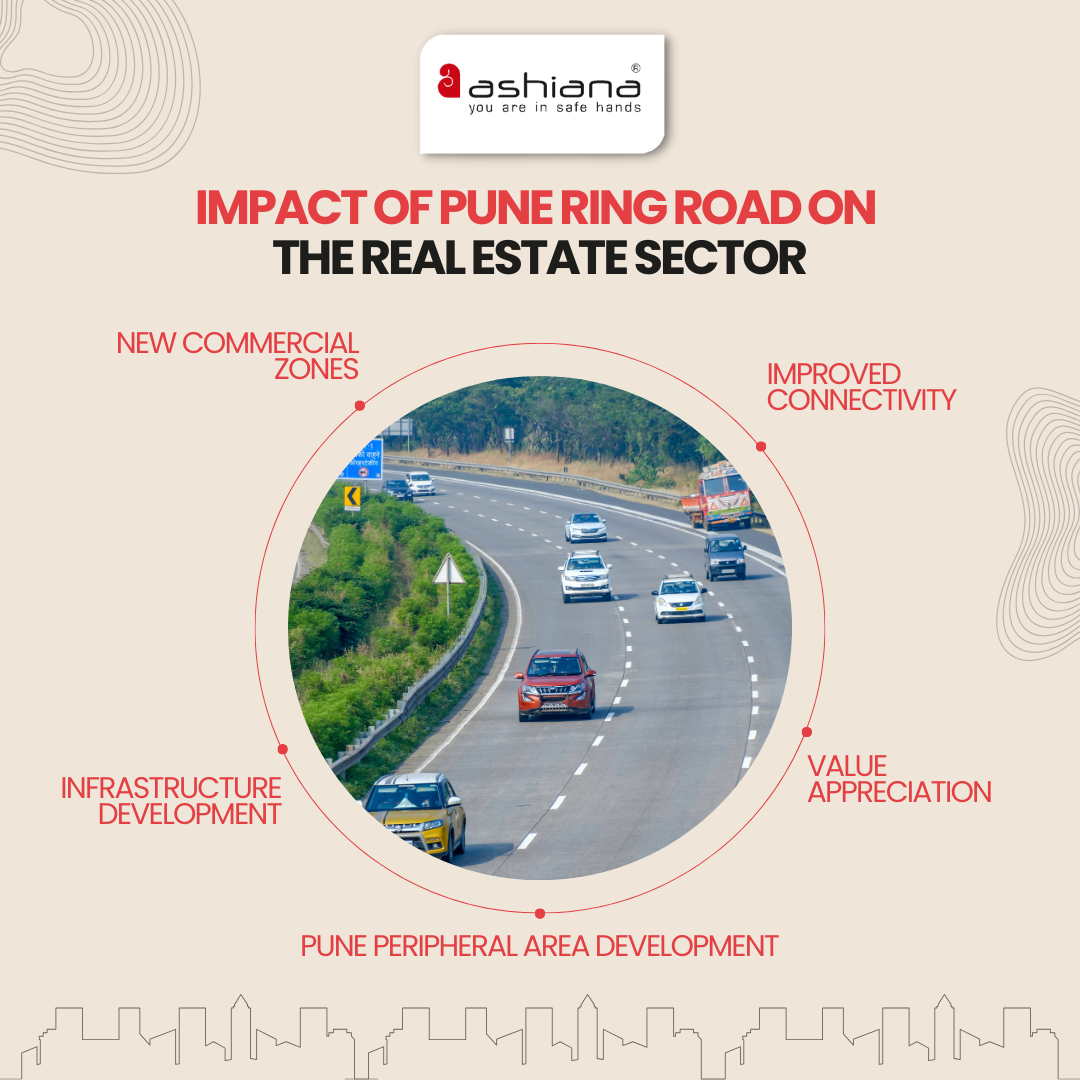
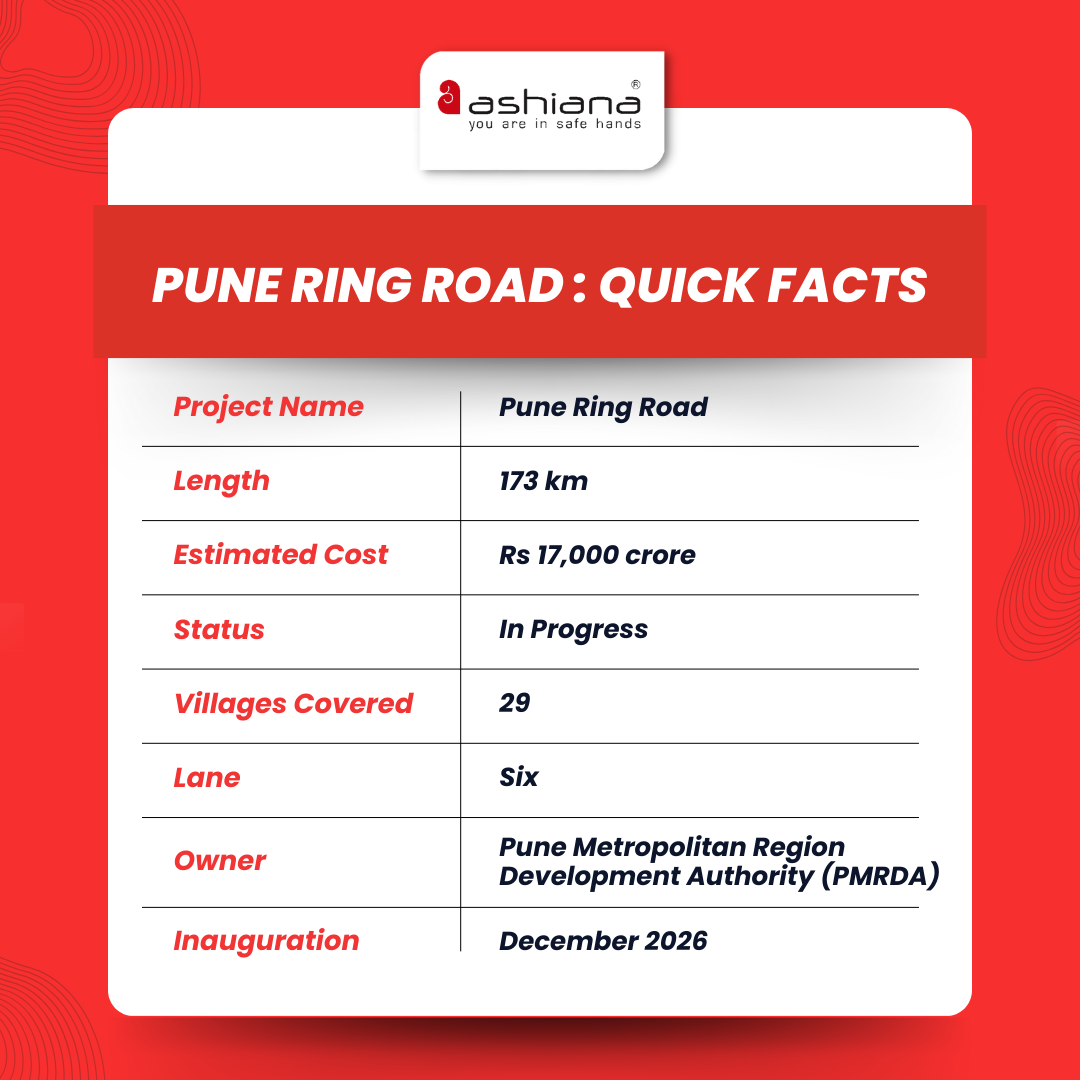
The New Ring Road Pune project is progressing. 90% of the land for the western phase has been acquired. Initial construction has begun, and the road is expected to be completed by 2027. It aims to improve connectivity and boost real estate growth in Pune’s peripheral areas.
Property rates near the new Pune Ring Road range from ₹25 to ₹50 lakh for 2 BHK flats in areas like Wagholi and Hadapsar. For 3 BHKs, prices vary between ₹50 lakh to ₹1.5 crore depending on the locality and its infrastructure.
Construction work for Pune’s new Ring Road is set to start in January 2024. This major infrastructure project is expected to improve connectivity by linking various highways and bypassing traffic-congested areas. Land acquisition is already well underway, with nearly 60-90% of the necessary land procured in key regions. The first phase of construction will focus on the western stretch.
The new Pune Ring Road covers several key areas and villages around Pune. It stretches approximately 170 km and is divided into eastern and western zones. Some of the major areas it passes through include:
The new ring road in Pune is expected to benefit several key areas by improving connectivity and reducing traffic congestion. Areas that will likely see the most benefit include:
Ashiana, Ashiana Housing build homes. Homes surrounded by vast green spaces and fresh breeze. Homes cocooned in secured gated complexes. Homes where futures are forged and there are opportunities to grow. And Homes in environments brimming with healthy activity, trust and respect. At heart, we build communities with care.
Other posts by Ashiana
Join 1000+ of fellow readers. Get expert real estate knowledge straight to your inbox absolutely free. Just enter your email address below.